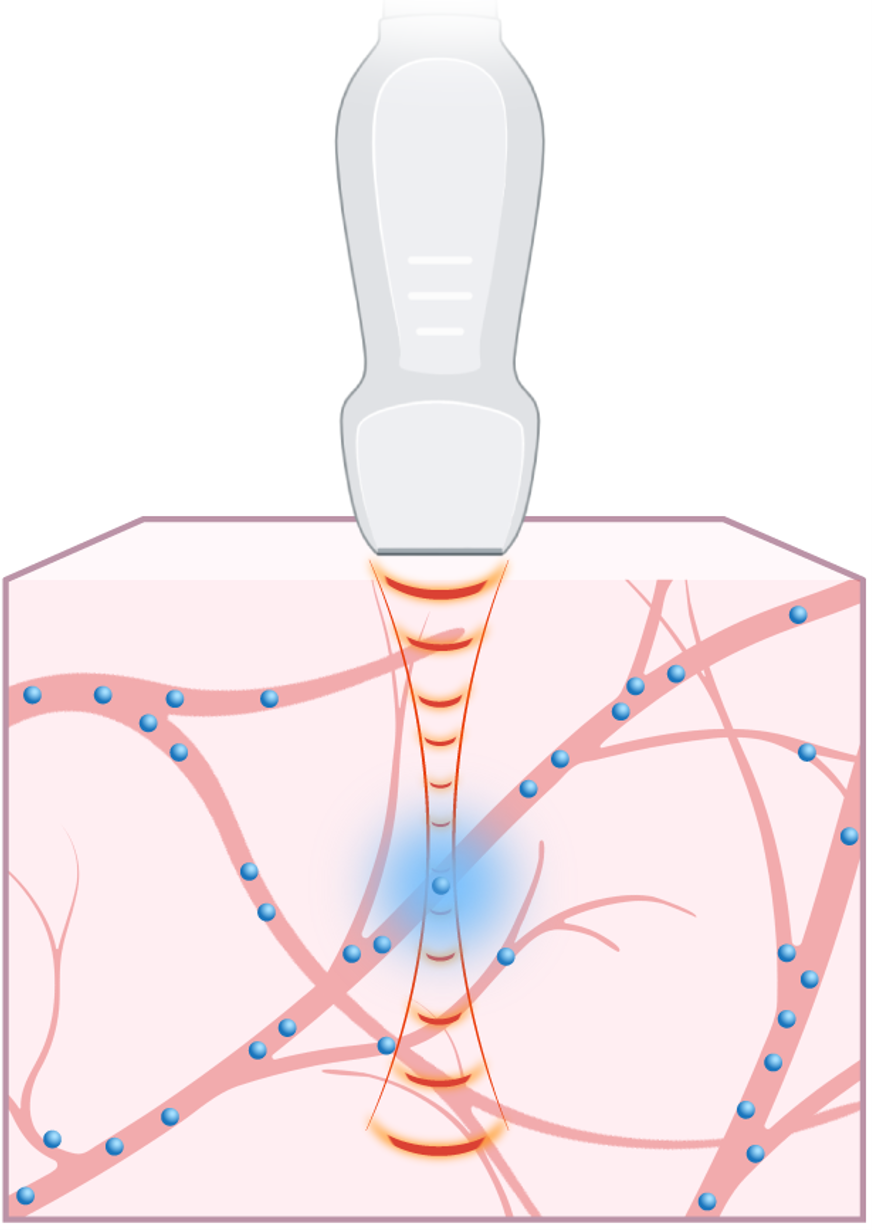Guosong Hong, Stanford University
Seeing the Sound: An ultrasound-mediated intravascular light source enabled by mechanoluminescent materials
Abstract:
Light is used in a wide range of methods in biology and medicine, such as fluorescence imaging, optogenetics, photoactivatable gene editing, photothermal and photodynamic therapies to treat cancers, and photochemotherapy to inactivate viruses in vivo. A critical challenge of applying light in vivo, such as deep-brain optogenetic neuromodulation and photochemotherapy in deep organs, arises from the poor penetration of photons in biological tissue due to scattering and absorption. Therefore, delivering light deep into the body requires invasive procedures, such as the insertion of optical fibers and endoscopes, as well as surgical removal of overlying tissues. The very invasiveness of these procedures also precludes easy repositioning and volume adjustment of the illuminated region in the same subject. To address these challenges, our lab has developed an ultrasound-mediated intravascular light source, leveraging the deep-tissue penetration of focused ultrasound. We capitalized on mechanoluminescent nanotransducers (MLNTs), which are colloidal nanoparticles of mechanoluminescent materials synthesized via a biomineral-inspired suppressed dissolution approach. These MLNTs can be delivered intravenously into blood circulation and emit light locally at the ultrasound focus. Owing to the deep penetration and fast temporal kinetics of ultrasound, we have demonstrated that this method can produce on-demand and dynamically programmable light emission patterns at elevated depths in different organs of live mice with millisecond precision. This ultrasound-mediated intravascular light source has allowed us to perform noninvasive “sono-optogenetic” neuromodulation in live mice, as well as brain-wide “scanning optogenetics” that activate different brain regions of the same mouse brain. Our development of the ultrasound-mediated intravascular light source has been published in PNAS (2019), Science (2020), Science Advances (2022), JACS (2022), JACS (2023), and Nature Protocols (2023).
Speaker: Guosong Hong, Stanford University
Christoph Schmidt’s interests are in experimental soft matter physics and biophysics. His group, at the moment, works on active materials, polymer networks, bacterial and animal cell mechanics and tissue mechanics, as well as on mechanosensory processes in biology. He started his academic career as a postdoc at Harvard and the Rowland Institute for Science in Boston, achieved tenure in the Physics Department and the Biophysics Research Division of the University of Michigan, and then moved to the Vrije Universiteit Amsterdam in the Netherlands. After seven years in Amsterdam he followed a call to head the Third Institute of Physics of the University of Göttingen in Germany. Recently he joined the Physics Department of Duke University and co-founded the Duke Soft Matter Center as part of the Duke Materials Initiative. Christoph Schmidt is a Fellow of the American Physical Society and a Member of the Göttingen Academy of Sciences and Humanities.
Host: Maria Mukhina
Seminars start at 4:00 pm, and refreshments will be served at 3:45 pm. All seminars are held in the Conference Room (1116) of the Institute for Physical Science and Technology (IPST) Building (Bldg #085) unless otherwise noted.



